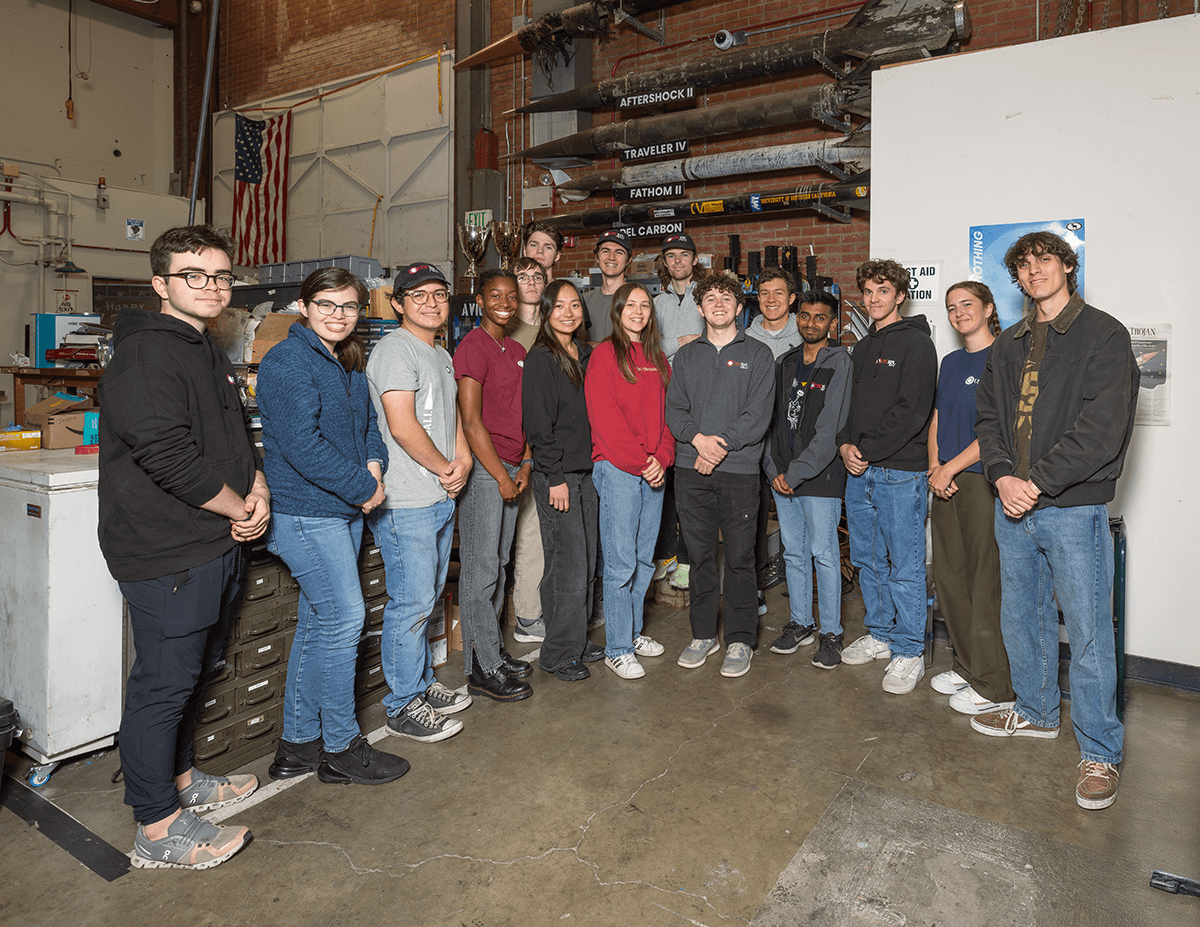USC Student Rocket Group Shatters International Amateur Space Record

Back in 2005 when the USC Rocket Propulsion Lab (USCRPL) was founded within the USC Department of Astronautical Engineering, the original goal was to be the first student-led group to design, build and successfully launch a rocket past the Kármán line — the recognized boundary of space at approximately 328,000 feet above Earth.
That was achieved in 2019, when USCRPL’s rocket Traveler IV reached an altitude of approximately 340,000 feet. In the intervening years, the team has been faced with the daunting prospect of having to beat their own record.
Five years on, USCRPL has not only surpassed the standard set by Traveler IV, but they’ve also soared past the international altitude record, reaching farther into space than any nongovernmental and noncommercial group has ever flown before. On Oct. 20, 2024, Aftershock II was launched out in Nevada’s Black Rock Desert, reaching a heady altitude of 470,000 feet.
The previous 20-year record of 380,000 feet was set by the Civilian Space eXploration Team (CSXT) back in 2004. Aftershock II beat that record by 90,000 feet.
“This achievement represents several engineering firsts,” said Ryan Kraemer, executive engineer of USCRPL and an undergraduate student majoring in mechanical engineering. “Aftershock II is distinguished by the most powerful solid-propellant motor ever fired by students and the most powerful composite case motor made by amateurs.”
Equipped with a new avionics unit and improved safety and data integration, Aftershock II reached a velocity of 5,283 feet per second and Mach 5.5. The comparatively lightweight rocket amounted to 330 pounds, at 13 feet in height and 8 inches in diameter, an impressive size-to-weight ratio that allows for more economical use of fuel and makes headway toward the team’s next goal to send a payload into space.

Crucially, the ability of the rocket to withstand temperatures of over 1,500°C due to air compression and friction at hypersonic speeds was made possible by a thermal protection system that included new paint and titanium-coated fins.
“Thermal protection is a major challenge at the industry level,” Kraemer explained. “The protective paint system performed perfectly, enabling the rocket to return to Earth intact. We also added titanium leading edges to the rocket’s fins for added protection — these turned blue from the intense heat, which just goes to show the extreme conditions our rocket successfully endured.”
Furthermore, the custom-designed computer systems and circuit boards were designed and built from scratch by the student team, enabling the live integration of data. This allowed for tracking of the rocket’s position during flight, gathering data and recovering the rocket on descent.

“This is an exceptionally ambitious project not only for a student team, but for any nonprofessional group of rocket engineers,” said Dan Erwin, chair of the USC Department of Astronautical Engineering. “It’s a testament to the excellence we seek to develop in our emerging astronautical engineers, who go on to achieve top roles in the space industry and in government positions.
“The can-do, problem-solving mindset of USCRPL students has provided a foundation for leading startups including Relativity Space and Ursa Major,” he added. “If you want to see what’s next for the space industry, keep an eye on USCRPL.”
Said USC Viterbi Dean Yannis C. Yortsos: “Since its founding 20 years ago, the USC Rocket Propulsion Laboratory has made a reality of the aspirations and vision for space of countless Viterbi undergraduate students across all engineering majors. It is thrilling to see how they have now shattered not only their previous global student record of reaching the Kármán line in 2019, but also the record of any amateur team in history. This extraordinary group of students shows how to imagine, what can be done in the lab and how to make it a reality.”




